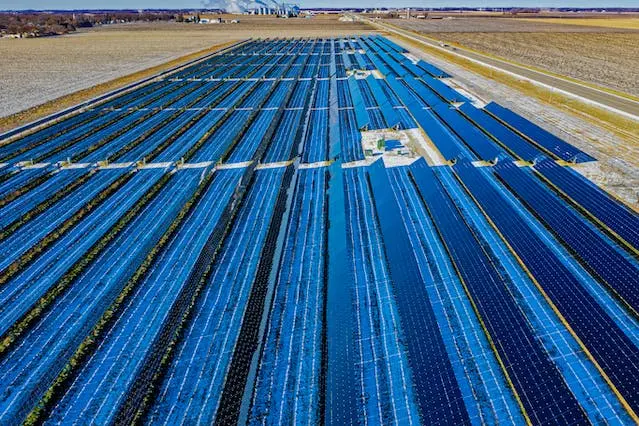Did you know that nearly 40% of a building’s energy consumption can be attributed to heating, cooling, and lighting, much of which is influenced by the sun’s interaction with the structure? As you’re seeking to reduce this energy footprint, it’s essential to consider how integrating solar shading can play a pivotal role in your architectural designs.
Solar shading isn’t just about slapping on some overhangs or choosing the right curtains; it’s an artful convergence of form and function that, when done correctly, enhances energy efficiency, occupant comfort, and the building’s overall aesthetic. You’ll need to navigate through a myriad of factors, from sun path analysis and shading device design to the selection of materials that meet codes and standards.
Moreover, understanding the interplay between shading and daylighting can transform a space from just average to extraordinary. Let’s explore how mastering these elements can elevate your architectural projects and why overlooking them could mean missing out on significant benefits.
Key Takeaways
- Sun path analysis and design optimization are important for optimizing natural light and improving energy efficiency in architectural design.
- Shading devices, such as fixed overhangs and adjustable options, play a crucial role in controlling heat gain and providing a comfortable environment.
- Incorporating vegetation in architectural design helps reduce solar heat gain, cooling costs, and glare while aligning with sustainable principles.
- Seasonal angle planning enables tailored shading strategies to minimize heat gain in summer and maximize passive solar heating in winter while maintaining year-round comfort.
Sun Path Analysis
To effectively harness or mitigate the sun’s influence on a building, it’s essential to routinely perform sun path analysis, a process that reveals how the sun travels across the sky at your specific location throughout the year. This method isn’t just about mapping daylight; it’s a strategic tool that can significantly improve the energy efficiency and comfort of your space.
By studying the solar angles and azimuth, you’ll pinpoint the sun’s position at any given time. This isn’t about guesswork; it’s a precise science that informs savvy design. Imagine positioning shading devices with such accuracy that you control solar heat gain to your advantage, optimizing natural light without the penalty of overheating. That’s the power of sun path analysis.
Understanding the nuances of solar tracking and solar orientation, you can tailor your architectural design to respond dynamically to the sun’s movements. It’s about being proactive, not reactive. As you delve into this analysis, you’ll uncover the rhythms of sunlight and shadow, allowing you to create a building that’s in harmony with its surroundings. This is how you craft spaces that aren’t only energy-efficient but also inherently comfortable for the people who use them every day.
Shading Device Design
Having grasped the importance of sun path analysis, let’s now explore how to design effective shading devices that both reduce heat gain and enhance your building’s energy performance. Strategic use of fixed overhangs is key, especially in minimizing exposure on east and west-facing glass, where the sun can be particularly intense.
You’ll want to consider a variety of materials and construction methods. Adjustable shading options offer versatility, allowing you to adapt to changing weather conditions and sun angles. These dynamic systems can be as simple as operable blinds or as sophisticated as automated external louvres.
When selecting glass for your windows, glass specifications are critical. Pay attention to the U-value, which measures how well a product prevents heat from escaping; the Solar Heat Gain Coefficient (SC), indicating the fraction of solar radiation admitted through a window; and the Visible Transmittance (Tvis), which refers to the amount of visible light transmitted. Each of these specifications will influence the overall performance of your shading devices.


Also, evaluate operational, maintenance, and safety concerns. Remember, while controlling heat gain is crucial, you shouldn’t compromise on natural daylighting and views. A well-designed shading system balances all these factors to contribute to a comfortable and energy-efficient building environment.
Vegetation and Shading
Let’s delve into how incorporating vegetation into your building’s design can’t only offer shade but also elevate the structure’s energy efficiency and aesthetic appeal. By strategically using plants, you can create a living architecture that breathes life into your space. Here’s how:
- Energy Efficiency: Vegetation provides natural shading, which can significantly reduce solar heat gain. This heat reduction can lead to lower cooling costs and contribute to the overall energy efficiency of your building. Green roof benefits include additional insulation, which can minimize heat loss in winter and keep interiors cooler in summer.
- Occupant Comfort: Well-placed plants and trees can reduce glare and block excessive heat, enhancing comfort levels for occupants. By softening the harsh rays of the sun, vegetation creates a more pleasant and productive environment.
- Sustainable Design: Incorporating vegetation into shading strategies aligns with sustainable design principles. It increases the ecological value of your property and supports green building practices. When it comes to plant selection, it’s critical to choose species that are well-suited to your local climate and the specific conditions of your site.
Seasonal Angle Planning
While integrating vegetation is a dynamic way to enhance shading and energy efficiency, it’s equally important to focus on seasonal angle planning for optimizing natural light and temperature control throughout the year. Seasonal angle planning involves tailoring your solar shading strategies to the sun’s changing path.
By understanding and planning for these variations, you can effectively control solar heat gain and reduce glare, making your space comfortable in every season.
|
Season
|
Sun Angle Changes
|
Shading Strategy
|
|---|---|---|
|
Winter
|
Low angles
|
Maximize exposure
|
|
Summer
|
High angles
|
Minimize exposure
|
|
Spring/Fall
|
Moderate angles
|
Adjustable systems
|
In summer, when the sun is high, you’ll want to minimize solar heat gain to keep cool. Conversely, in winter, the low sun angle can be harnessed for passive solar heating if you maximize exposure. Spring and fall present moderate angles, requiring flexible solar shading strategies that can adapt to more variable conditions.
Daylighting Enhancement
To effectively harness the sun’s bounty, daylighting enhancement techniques are pivotal in bringing ample natural light into a building, thereby reducing reliance on artificial illumination and promoting energy efficiency. As you dive into the world of daylighting design, remember that it’s not just about bathing your spaces in sunlight; it’s about doing so intelligently and sustainably. Here’s how you can enhance natural light optimization in your architectural projects:
- Maximize Reflective Surfaces: These can bounce sunlight deeper into your rooms, ensuring that even those areas farther from windows receive sufficient daylight.
- Install Light Shelves: Placed strategically, light shelves can redirect sunlight towards the ceiling, which then diffuses it throughout the space, providing balanced lighting and minimizing glare.
- Plan Window Placement Carefully: Windows shouldn’t only be placed for views but also to capture the sun’s path effectively, allowing for optimal daylight penetration without the unwanted heat.
Balancing these elements with shading design is crucial. You want to avoid glare and excessive solar heat gain that can come with unfiltered natural light.
Frequently Asked Questions
What Is Sun Shading in Architecture?
Sun shading in architecture is your way to blend aesthetics with functionality. It’s about using innovative materials to control light and heat, ensuring comfort without sacrificing style. You’ll love the energy-efficient, glare-free spaces it creates.
What Are the Shading Methods Used to Control Solar Heat on Buildings?
You’ll find that using passive techniques like overhangs and awnings, along with shading materials like blinds and screens, can significantly cut down on solar heat and keep your building comfortably cool.
What Is Solar Control in Architecture?
In architecture, you’re harnessing solar control to balance energy use and coziness. It’s about understanding solar psychology and design dynamics to manage light and heat, keeping spaces efficient and comfortable.
What Are the Benefits of Shading Devices?
You’ll find shading devices not only boost energy savings by cutting cooling costs but also enhance your space’s aesthetic appeal, making it comfier and protecting your interiors from harsh UV rays.
Conclusion
In conclusion, mastering the integration of solar shading in architecture involves a strategic blend of sun path analysis, effective shading device design, incorporation of vegetation, and seasonal angle planning. By understanding and leveraging these elements, architects can optimize energy efficiency, enhance occupant comfort, and create aesthetically pleasing, sustainable spaces.
The careful selection of materials, consideration of solar angles, and thoughtful daylighting enhancement techniques all contribute to crafting buildings that are not only environmentally conscious but also inviting and comfortable for those who inhabit them.


